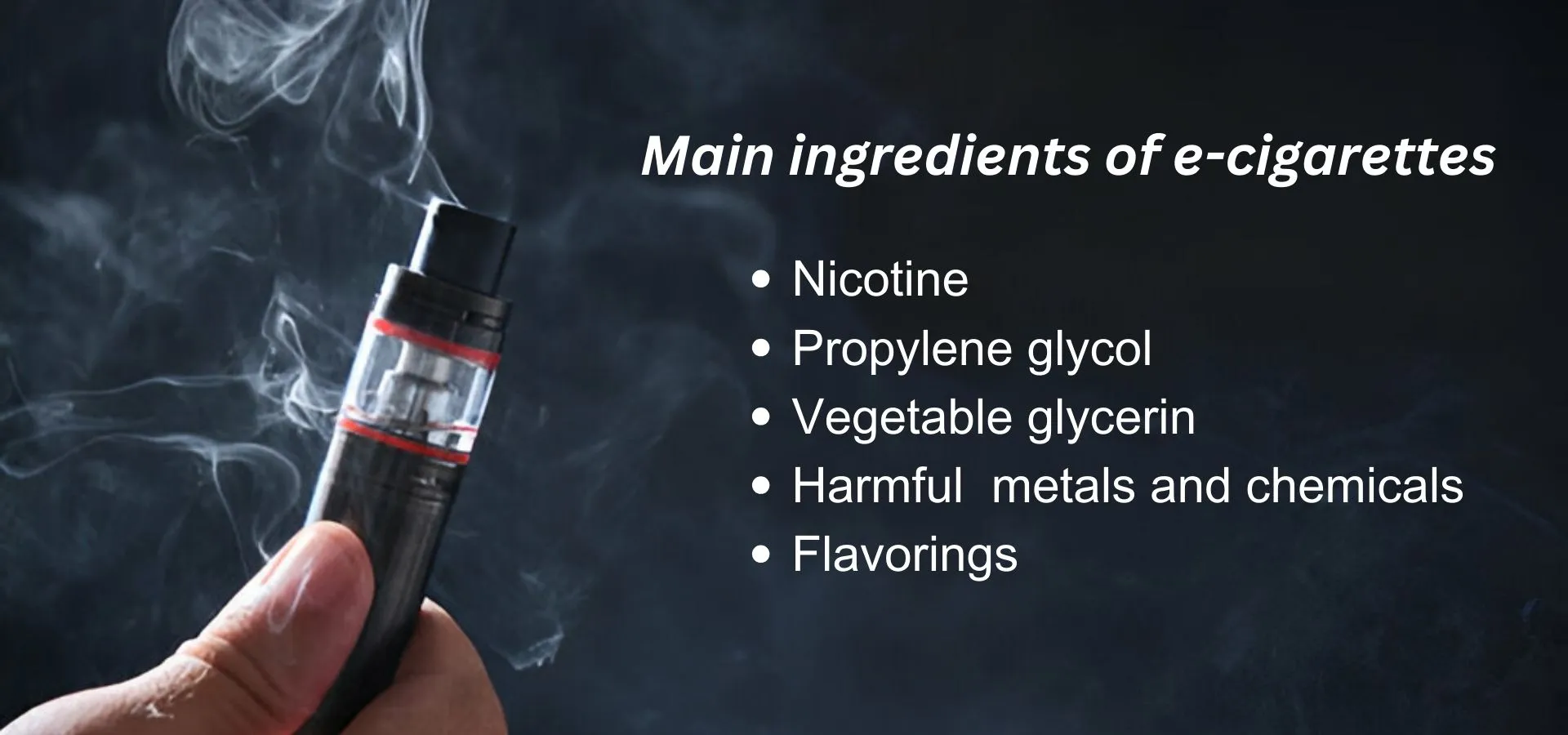E-cigarettes and vaping are often marketed as safer alternatives to smoking, especially for those who want to quit. But how true is this claim? Are e-cigarettes and vaping less harmful than smoking for lung cancer risk? The question is gaining momentum due to the recent outbreak of deaths and lung injuries linked with vaping in the United States.
In this blog post, we will review the current evidence and facts about e-cigarettes and lung cancer, and try to answer some common questions and misconceptions.
Nicotine and other drugs are delivered through battery-operated e-cigarettes, an aerosol, that the user inhales. Vaping-smoking is the act of using an e-cigarette or a similar device, such as a vape pen or a pod mod. E-cigarettes come in various shapes, sizes, and flavors, and can contain different levels of nicotine and other chemicals.

E-cigarettes contain nicotine as their main ingredient. It is a highly addictive substance that affects the physiology of the nervous system therefore leading to hypertension, increased heart rate, and rapid breathing.
Propylene glycol and vegetable glycerin are also present in the e-liquid or e-juice of vape, which is used to create the aerosol or vapor that the user inhales. These substances are generally considered safe when used in food and cosmetics, but their effects when heated and inhaled are not well understood.
The e-liquid may also contain various flavorings, additives, and other chemicals that can vary widely depending on the brand and type of e-cigarette. Some of these chemicals may be potentially harmful to the lungs, such as diacetyl, which is linked to a severe lung illness known as bronchiolitis obliterans or popcorn lung.
A single puff of e-cigarette vapor can contain over 1,500 chemicals!
Smoking involves the production of nicotine by burning tobacco, which produces various harmful toxins that lead to major diseases such as cancer, stroke, and chronic lung diseases. Whereas vaping works on the principle of heating e-liquids making them less harmful.
Vaping is not, however, risk-free or harmless. There are potential health risks, such as:
Nicotine addiction: Nicotine causes severe addiction and can directly affect the brain development of all ages, ranging from teens to premature babies. Nicotine can also raise your blood pressure and increase your risk of a heart attack.
Lung injury: Vaping can cause lung damage and inflammation and has been associated with several cases of a severe lung condition called EVALI (e-cigarette or vaping use-associated lung injury). The CDC has detected vitamin E acetate, a thickening agent consumed in some vaping items, as a susceptible chemical among people with EVALI.

Unknown chemicals: Vaping products can contain many other chemicals that are not well-studied or regulated, such as flavorings, caffeine, pesticides, and heavy metals. Some of these chemicals may have toxic or carcinogenic effects or cause respiratory irritation.
Dual use: Many people who vape also smoke regular cigarettes, which is called dual use. This can increase exposure to nicotine and other harmful substances and reduce the chances of quitting smoking successfully.
Read: Can Secondhand Smoke Cause Drug Test Failure?
The lungs are the organs that carry out the process of interchange between carbon dioxide and oxygen in the blood and the air. The lungs are made of several mini air sacs called alveoli, surrounded by capillaries. The alveoli and capillaries form a thin membrane that allows gas exchange. The lungs also have a protective layer of mucus and cilia, which are hair-like structures that help to trap and remove dust, bacteria, and other foreign particles from the airways.
When a person inhales the aerosol or vapor from an e-cigarette, they are exposing their lungs to nicotine and other chemicals that can have various effects on the lung tissue and function. Some of the possible effects are:
Regardless of cancer risk, e-cigarettes remain addictive due to nicotine. This can lead to dependence, withdrawal symptoms, and a potential transition to traditional cigarettes.
Cancer that develops in the cells of the lungs is known as lung cancer. Lung cancer is one of the main causes of death related to cancer all over the world, and smoking is the main risk factor for lung cancer. Smoking causes lung cancer by exposing the lung cells to carcinogens, which are substances that can damage the DNA and cause mutations that lead to uncontrolled cell growth and invasion. Smoking also causes lung cancer by promoting the growth and survival of cancer cells, suppressing the immune system and the DNA repair mechanisms, and creating a favorable environment for tumor angiogenesis and metastasis.

At this point, it's unclear if using electronic cigarettes causes lung cancer. According to the American Cancer Society, e-cigarettes do contain some chemicals that are linked to cancer, although much less than in regular cigarettes. Some potentially harmful chemicals have been detected in e-cigarettes, namely nitrosamines, formaldehyde, acetaldehyde, acrolein, metals, and PAHs, which are known or suspected carcinogens. However, the levels of these chemicals are usually low and generally far lower than in tobacco cigarettes.
There is no conclusive evidence from human studies that e-cigarettes cause lung cancer. The delayed consequences of e-cigarettes on lung cancer risk are yet unknown. Moreover, most e-cigarette users are former or current smokers, which makes it difficult to isolate the effects of e-cigarettes from those of tobacco cigarettes. Therefore, more studies are required to determine the carcinogenicity of e-cigarettes and how they affect the risk of lung cancer.
Vaping may be less harmful than smoking for lung cancer risk, but it is not risk-free. some studies have suggested that vaping may raise the possibility of developing lung cancer by causing DNA damage, oxidative stress, and inflammation in the lungs.
Therefore, the safest option is to avoid both smoking and vaping and to use proven methods to quit smoking, such as nicotine replacement therapy, counseling, or medication.
